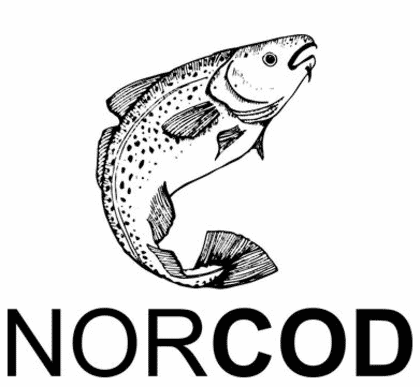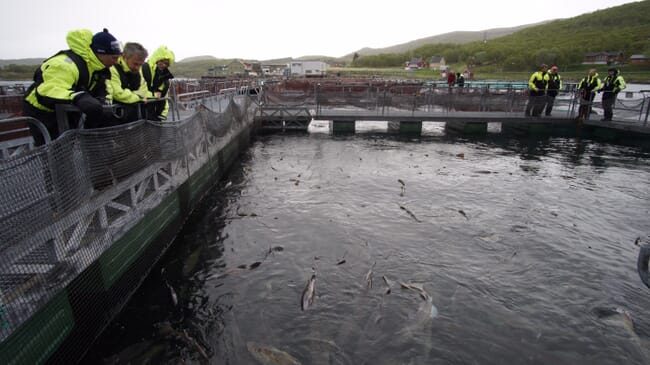While robust market fundamentals point to a bright future for responsible aquaculture generally, in Norway massively improved biological material is paving the way for a rebound in cod farming in particular.
There has been very limited activity in cod production globally in recent years but that is about to change as pioneering aquaculture venture Norcod's plans to establish cod farming on an industrial scale gather momentum. Led by personnel with deep industry experience, Norcod is convinced that cod has the potential to be a significant contributor to the Norwegian economy. Quality biomass is the critical input factor.

Stemfish with poor biology and first-generation fry of inconsistent quality were partly to blame for the biomass loss seen during the last foray into cod farming between 2004 and 2012. Since then quantum leaps in biology have radically changed the landscape, with an estimated half-a-billion Norwegian kroner invested in two cod breeding programs that have been working quietly in the background in the belief that the tide would again turn.
Aquaculture-focused national research institute Nofima's breeding programme kicked off in 2002 with the goal to evolve economically important characteristics and disease resistance. Commercial hatchery player Havlandet Marin Yngel AS followed suit a year later. Their far-sighted commitment has seen the biological challenges of stagnant growth, susceptibility to infection and high escape figures systematically overcome.
Dramatically increased survival rate and quality of fry has been achieved through careful selection of eggs post fertilisation. The development of stemfish feed with minimal contamination has also boosted egg quality. Detailed comparative studies also showed that using eggs from four-year-old fish produce the best outcomes, according to Nofima.
Fish have been selected and developed for faster growth, higher harvest yield and higher resistance, while new feeds have been developed that support optimal growth and intestinal health. Farmed cod now grows up to 35 percent to 40 percent faster than fish in the wild.
“Faster growth has always been the highest priority and has been the focus of the cod breeding programme. Breeding has led to a growth increase of 9 percent to 10 percent per generation, or around 3 percent per year about the same as for farmed salmon,” says Atle Mortensen, senior scientist at Nofima.

© Nofima
Data from the stemfish produced for Norcod shows a dramatic 40 percent increase in survival rate for fish below 5 grams, up from 10 percent a decade ago. Successfully selecting for smaller heads has also been a “game changer” in boosting yield. In wild cod the much larger head can account for 40 percent of body weight.
Today's sixth generation of stem fish is “a highly stable product and a completely different fish” to 15 years ago, says Norcod managing director Rune Eriksen. Havlandet is now at capacity to deliver around three million fry, at 2-3 grams each, per annum. A kick-off batch of 260,000 fry from Nofima is already in production for Norcod and slated to go into the sea at the company's two facilities northwest of Trondheim imminently.
While growth was the “holy grail,” selecting specifically for other characteristics typically reduced the growth rate. Targeted breeding for disease resistance was unavoidable until the arrival of new and effective vaccines on the market. With these now available, the bacterial infections vibrosis and atypical furunculosis no longer pose a threat to farmed cod.
“As per today there are no virus diseases that create problems for farmed cod. Both cod lice and sea lice affect cod but do not harm the fish like salmon lice do. Intestinal obstruction has very occasionally caused mortality in the sea phase. Compared to farmed salmon the health status of farmed cod is extremely good,” says Mortensen.
The fish now show significant domestication, especially calm behaviour in the sea phase, swimming as a school in rings around the net much like salmon. “That is astonishing given that selection was not made based on behaviour characteristics,” says Mortensen. Not surprisingly, healthy, happy fish adapted to confinement grow faster. The high level of escape in the past was caused by the cod chewing holes in the nets. Today's tame fish display little desire to escape, while new standards and net technologies have also mitigated this tendency. Norcod's facilities are state of the art, optimising technical developments in equipment and feeding systems achieved in salmon farming in recent years.
Cannibalism is a peculiar trait of cod under stress but this problem has been virtually eradicated in the sixth generation of tame fish by means of improved feed and better feed distribution, allowing even growth across the population. Better growth, improved feed and optimal utilisation of feed also make it much easier to satisfy year-round demand.
Breeding has traditionally featured a combination of individual and family-based selection, with family selection ensuring diversity in the broodstock. The advent of molecular genetics, where information from the entire genome can be used for much greater precision in selecting for positive characteristics, promises even faster progress in the future.
Norcod stands to reap the rewards of these biological breakthroughs as a first mover. The quality of its cod is unmatched and unique globally. Initiating such a breeding project from scratch that could guarantee such strong characteristics would require a huge investment of time and money. But consumers want cod right now. Wild stocks are under pressure with limitations in capture quotas squeezing supply. Demand can only be met with cost-effective farming. Norcod's timing is on target to satisfy a market hungry for stable deliveries of fresh cod 12 months of the year.
Ensuring the welfare of the cod themselves throughout the production cycle also remains top priority. “We should always remember that these are living creatures that should be handled with care and respect. No question,” Eriksen says.
The production process from fry to plate takes between 23 to 26 months. Norcod has its sights set on sales of 9,000 tonnes of cod in 2021, rising to a total of 10 facilities with an output of 25,000 tonnes in 2025. “We believe we have a very solid business case,” says Eriksen. The market is waiting.


